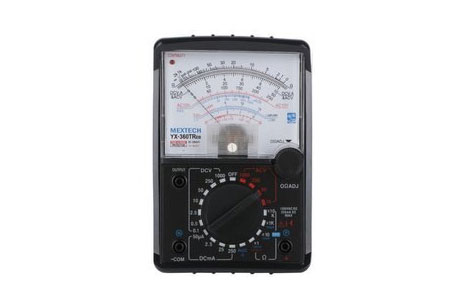Key Takeaway
To test a circuit breaker with a multimeter, start by turning off all connected devices. First, set your multimeter to the continuity setting. Then, carefully remove the circuit breaker from its panel. Attach one probe to the breaker’s load terminal and the other to the line terminal.
A beep or zero reading indicates continuity, meaning the breaker is functioning. No beep means it’s faulty. Remember, safety first! Always use insulated tools and ensure you’re not grounded. Testing a circuit breaker with a multimeter helps identify faults quickly. If unsure, consult a professional. This simple test can prevent electrical failures.
Why Testing Circuit Breakers is Important
Testing circuit breakers is an important aspect of maintaining electrical safety and reliability in both residential and commercial settings. Circuit breakers are designed to protect electrical circuits from overload and short circuits by interrupting power flow when necessary. Regular testing ensures that they function properly and respond correctly to electrical faults.
This practice helps prevent electrical fires and equipment damage, safeguarding both property and lives. By conducting routine tests, users can identify potential issues early and take corrective actions before problems escalate. Understanding the importance of circuit breaker testing is crucial for anyone involved in electrical maintenance and safety.

Setting Up Your Multimeter for Circuit Breaker Testing
Testing circuit breakers is another critical application of a multimeter. To ensure safe and accurate measurements, follow these steps:
1. Set the Multimeter to Continuity: Set the multimeter to the continuity setting, which will emit a tone when a connection is established. This is useful for checking the operation of the breaker.
2. Check the Breaker’s Position: Before testing, ensure the circuit breaker is in the off position.
3. Connect the Probes: Place the red probe on the output terminal and the black probe on the input terminal of the breaker. If the breaker is functioning correctly, the multimeter will show continuity (a tone will be heard).
4. Test the Circuit with the Breaker On: Flip the breaker to the on position. Then, test the circuit with a known load to verify that the breaker properly allows current to pass through. If the breaker fails to allow current, it may be defective.
By following these steps, you can ensure that your circuit breakers are functioning properly and are safe to use.
Step-by-Step Process to Check for Continuity and Voltage
When testing for continuity or voltage in a circuit, the steps are straightforward but important for safety and accuracy.
Checking Continuity:
1. Set the Multimeter to Continuity Mode: Turn the dial to continuity mode (usually marked with a sound wave symbol).
2. Insert Probes: Insert the black probe into the COM port and the red probe into the VΩma port.
3. Test the Circuit: Place the probes across the two points you want to check for continuity. These could be across a wire or component.
4. Check for Beep: If the circuit is continuous, the multimeter will emit a beep. If there’s no beep, the circuit is open or broken.
Checking Voltage:
1. Set the Multimeter to Voltage Mode: Set the dial to AC or DC voltage mode depending on the circuit.
2. Insert the Probes: Insert the black probe into the COM port and the red probe into the VΩma port.
3. Place Probes Across the Circuit: Place the black probe on the negative terminal and the red probe on the positive terminal.
4. Read the Voltage: The voltage value will appear on the multimeter’s display. Ensure the correct unit is displayed (volts, millivolts).
Identifying Faulty Circuit Breakers in Electrical Systems
Faulty circuit breakers can pose serious risks, including electrical fires and damage to appliances. Here are key signs to help identify if a circuit breaker is faulty:
1. Frequent Tripping: A breaker that trips repeatedly without an apparent cause, even when the circuit is not overloaded, could indicate an internal fault. It’s a sign the breaker may need replacement.
2. Breaker Not Resetting: If the breaker won’t reset after being flipped off and back on, it suggests an issue with the internal mechanism. In such cases, replacement is necessary.
3. Physical Damage: Burn marks or discoloration on the breaker or panel are signs of excessive heat or arcing. This often occurs due to prolonged overcurrent conditions and indicates that the breaker is failing.
4. Overheating: A breaker that feels hot to the touch could indicate poor connections or excessive current. Overheating can damage the breaker and create fire hazards.
5. Lack of Power: If a breaker is in the “on” position but no power is flowing to the circuit, it might be internally damaged. A continuity test with a multimeter can confirm this.
Safety Tips When Working with Circuit Breakers
Working with circuit breakers requires extra caution. Always start by turning off the main power supply to avoid accidental shocks. Use a non-contact voltage tester to confirm that no current is flowing before proceeding.
Choose a multimeter rated for high-voltage tasks when diagnosing circuit breakers. Ensure the probes are properly insulated and in good condition. Avoid using damaged tools, as they can compromise safety.
When testing, place the probes carefully to avoid arcing or short circuits. Maintaining a safe distance from live components reduces the risk of accidental contact. Proper lighting and workspace organization further enhance safety.
Conclusion
In conclusion, testing a circuit breaker with a multimeter is a straightforward process that can help you identify whether the breaker is functioning properly or needs replacing. By checking for continuity and verifying that the breaker is allowing current to flow when it should, you can pinpoint issues such as a tripped breaker or a faulty connection.
Ensure that the circuit is de-energized before performing the test to avoid electrical shock. Taking the time to test circuit breakers regularly can save you from more extensive electrical problems down the line, offering both safety and peace of mind.
